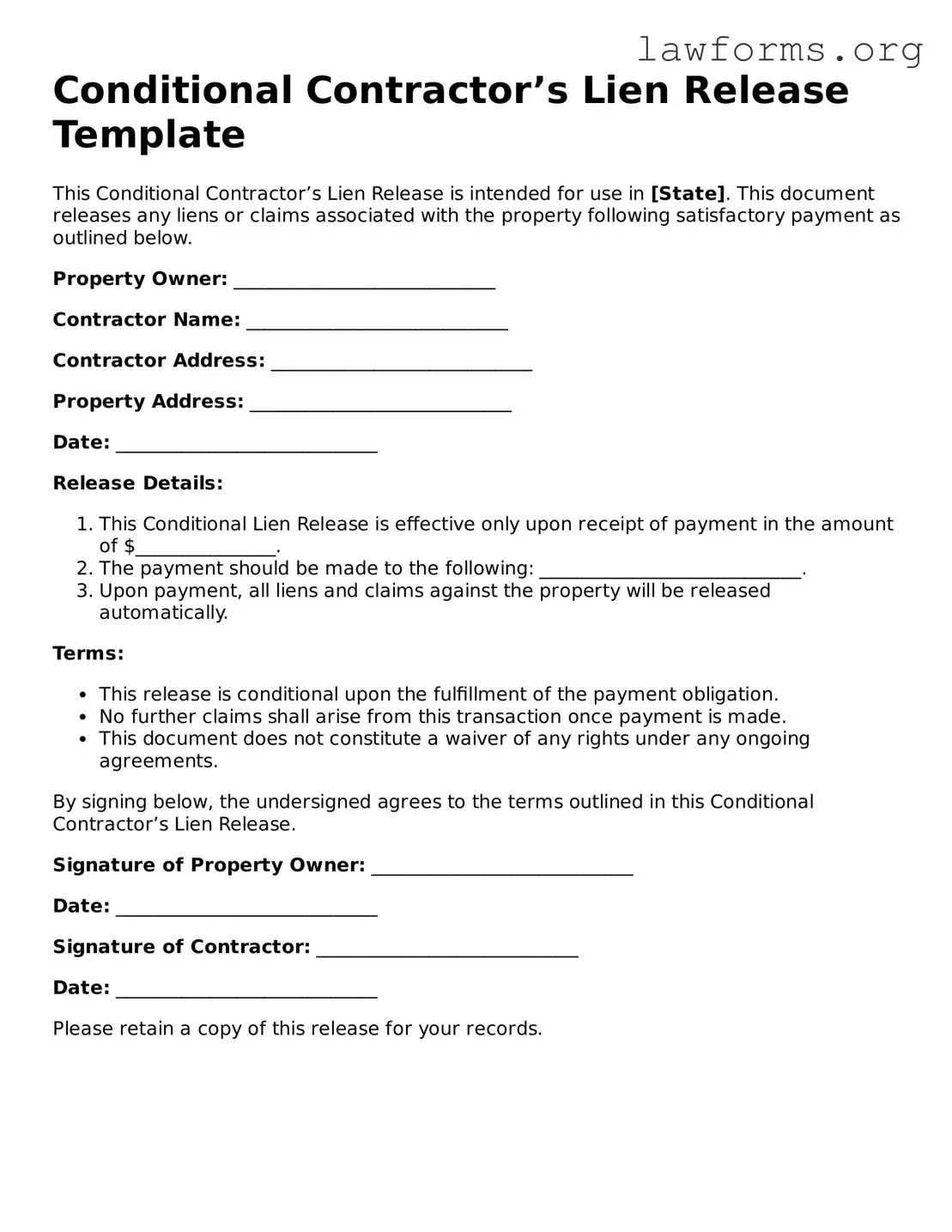Conditional Contractor’s Lien Release Template
This Conditional Contractor’s Lien Release is intended for use in [State]. This document releases any liens or claims associated with the property following satisfactory payment as outlined below.
Property Owner: ____________________________
Contractor Name: ____________________________
Contractor Address: ____________________________
Property Address: ____________________________
Date: ____________________________
Release Details:
- This Conditional Lien Release is effective only upon receipt of payment in the amount of $_______________.
- The payment should be made to the following: ____________________________.
- Upon payment, all liens and claims against the property will be released automatically.
Terms:
- This release is conditional upon the fulfillment of the payment obligation.
- No further claims shall arise from this transaction once payment is made.
- This document does not constitute a waiver of any rights under any ongoing agreements.
By signing below, the undersigned agrees to the terms outlined in this Conditional Contractor’s Lien Release.
Signature of Property Owner: ____________________________
Date: ____________________________
Signature of Contractor: ____________________________
Date: ____________________________
Please retain a copy of this release for your records.
